Table of Contents
Welding techniques are crucial in various industries, but the challenge of preventing burn-through remains a significant concern. Mastering the art of How to Weld Without Burning Through Metal is essential for achieving strong, durable welds. his guide offers insights into preventing burn-through, covering causes, prevention techniques, and solutions. Explore this resource for essential strategies in achieving impeccable welds
1. Understanding Burn Through in Welding
What is Burn Through?
Burn-through in welding occurs when excessive heat causes the metal to melt beyond the intended depth, resulting in holes or weakened areas in the weld. It’s a critical flaw that compromises the structural integrity of the welded joint.
This phenomenon commonly arises due to factors like high amperage, improper travel speed, inadequate joint preparation, or incorrect welding techniques. These elements collectively contribute to the penetration of the weld beyond the required depth, leading to burn-through.
The Impact and Consequences of Burn Through
The consequences of burn-through extend beyond mere aesthetic imperfections. They jeopardize the strength and durability of the weld, potentially causing structural failure. In industries where precision and strength are paramount, such as construction, automotive, or aerospace, burn-through can result in costly rework or safety hazards.
Understanding the gravity of burn-through underscores the necessity of mastering prevention techniques and effective remedies. In the subsequent sections, we’ll delve deeper into the causes of burn-through and explore actionable strategies to mitigate this welding challenge.
2. Causes of Burn-Through
- High Amperage: One primary cause of burn-through is excessive amperage. When the welding machine operates at a higher-than-needed amperage setting, it generates excessive heat, leading to rapid melting and penetration of the metal.
- Factors Affecting Travel Speed: Inadequate control over the speed at which the welding torch moves along the joint can also contribute to burn-through. Both excessively slow and excessively fast travel speeds can disrupt the balance required for optimal welding, causing burn-through.
- Joint Penetration and Base Metal Preparation: Improper joint preparation, such as insufficient cleaning or inappropriate penetration depth, can lead to burn-through. When the base metal isn’t adequately cleaned or prepared, achieving a proper weld becomes challenging, increasing the likelihood of burn-through.
- Effects of Grinding and Cleaning: Excessive grinding of the base metal can weaken it, making it more prone to burn-through during welding. Conversely, inadequate cleaning may leave contaminants that disrupt the welding process, contributing to burn-through.
- Arc Length, Travel Angle, and Technique: Incorrect arc length or steep travel angles can intensify the heat concentration at the welding point, causing burn-through. Additionally, poor welding technique, such as dragging along the seam or using improper patterns, can exacerbate this issue.
Understanding these causes is pivotal in preemptively addressing burn-through issues. The subsequent sections will delve into proactive measures and effective strategies to prevent burn-through, ensuring stronger, high-quality welds.
3. Prevention Techniques
- Quick Tips for Avoiding Burn-Through: Implementing a few key practices can significantly reduce the risk of burn-through. These include maintaining suitable amperage settings, controlling travel speed, ensuring proper joint preparation, and adhering to correct welding techniques.
- Setting the Correct Amperage and Machine Settings: Understanding the appropriate amperage for the specific welding task is crucial. Adjusting machine settings in accordance with the material thickness and type helps regulate heat output, mitigating burn-through risks.
- Understanding Suitable Welding Types: Different welding methods suit various materials and thicknesses. Choosing the appropriate technique, such as MIG, TIG, or stick welding, contributes to achieving optimal welds without burn-through.
- Proper Electrode Handling and Storage: Ensuring electrodes are stored and handled correctly maintains their integrity, reducing the chances of inconsistencies during welding that might lead to burn-through.
- Adhering to AWS and Manufacturer Guidelines: Following industry standards and manufacturer recommendations for welding procedures, equipment settings, and material preparation significantly decreases the probability of burn-through.
By incorporating these preventive measures into your welding practices, you can effectively minimize the occurrence of burn-through, fostering stronger welds and enhancing overall work quality. The subsequent sections will focus on addressing burn-through issues when they do occur and strategies for rectifying them effectively.
4. Fixing Burn-Through
- Steps to Rectify Burn-Through Areas: When burn-through occurs, certain steps can help salvage the weld and restore its integrity.
- Cleaning and Tack Welding Process: Begin by thoroughly cleaning the affected area, removing any debris or contaminants. Tack welding—applying small, controlled welds—helps fill the holes gradually, preventing further damage.
- Checking for and Addressing Holes: Inspect the welded area for holes resulting from burn-through. Using appropriate welding techniques and filler material, carefully fill these holes, ensuring proper penetration without causing additional damage.
- Repeat the Process: Repeat the welding process cautiously, ensuring proper heat control and filler material deposition. This iterative approach gradually reconstructs the weld, addressing the burn-through while preserving the structural integrity.
- Verifying for Integrity: After the repair, conduct a thorough examination to ensure the weld’s structural soundness. Non-destructive testing methods or visual inspections can confirm the effectiveness of the repair.
By following these steps diligently, welders can rectify areas affected by burn-through, salvaging the weld and maintaining the component’s functionality and strength. However, prevention remains the key to avoiding the complexities and disruptions caused by burn-through during welding processes.
5. Avoiding Burn Holes in Welding
- Following Guidelines and Adjusting Settings: Adhering to welding guidelines specific to the material and joint type minimizes burn-hole risks. Additionally, adjusting settings like amperage, voltage, and wire speed according to the material thickness and welding process is crucial in preventing burn holes.
- Correct Processes and Techniques to Avoid Holes: Employing appropriate welding techniques, such as maintaining consistent travel speeds and using proper filler metals, significantly reduces the likelihood of burn holes. Understanding the intricacies of the chosen welding method helps maintain control and precision during the welding process.
- Preparing Metal for Welding: Thoroughly cleaning the base metal and removing any contaminants or coatings before welding is essential. Proper joint preparation, including beveling or edge preparation where necessary, ensures optimal weld penetration without creating weak spots prone to burn holes.
By conscientiously following these guidelines, adjusting settings appropriately, and adopting suitable techniques, welders can proactively prevent burn holes, ensuring clean, robust welds with minimal risk of compromising structural integrity. Preventive measures significantly reduce the need for post-weld repairs and ensure a more efficient welding process overall.
6. Preventing Welds From Burning Through
-
Common Problems and Solutions:
- Amperage Control: Adjusting amperage according to the material thickness helps prevent burn-through. Lower settings for thinner materials and higher settings for thicker ones mitigate excessive heat that leads to burn-through.
- Travel Speed Management: Controlling the pace at which the welding torch moves along the joint is crucial. Finding the optimal speed for the welding process prevents both excessive heat build-up and insufficient penetration, reducing the risk of burn-through.
- Electrode Angle Optimization: Maintaining the correct angle between the electrode and the workpiece surface is essential. Improper angles can concentrate heat, potentially causing burn-through. Correct electrode positioning helps distribute heat evenly, reducing the risk of melting through.
- Choosing Suitable Electrode Sizes: Using appropriately sized electrodes for the welding task prevents excessive heat concentration. Larger electrodes generate more heat, potentially causing burn-through, especially on thinner materials.
- Pass Control: Limiting the number of consecutive passes reduces the cumulative heat input, mitigating the risk of burn-through. Properly planning and executing multiple passes, especially on thicker materials, prevents excessive heat build-up.
- Gap Management: Managing the gap between materials being welded is critical. A gap that’s too wide can lead to excessive heat concentration and potential burn-through. Ensuring a suitable gap width helps regulate heat distribution.
- Joining Different Material Thicknesses: Welding thin steel to thick steel requires careful consideration. Adjusting settings, such as amperage and travel speed, to accommodate the differences in thickness prevents burn-through on thinner materials while ensuring proper penetration on thicker ones.
-
Proactive Steps to Prevent Burn-Through Before Welding:
- Thorough Preparation: Adequate cleaning and joint preparation ensure a solid foundation for welding, reducing the risk of burn-through.
- Pre-Weld Testing: Conducting test welds on scrap material helps determine the optimal settings and techniques for the specific welding task, preventing burn-through during the actual weld.
By addressing these common issues and implementing proactive measures before starting the welding process, welders can significantly reduce the chances of burn-through, ensuring high-quality, durable welds that meet structural requirements. Prevention remains the cornerstone for achieving successful welds while minimizing rework and material wastage.
7. Stopping a Weld from Burning Through
-
Techniques to Halt Burn Through Mid Weld:
- Adjusting Parameters on the Fly: If burn-through is imminent, quickly adjusting welding parameters like amperage, voltage, or wire speed can help control the heat input. Lowering the settings or changing the welding technique on the spot might prevent burn-through.
Changing Welding Patterns: Altering the welding pattern can distribute heat more evenly, reducing the risk of burn-through. Adjusting the direction or shape of the weld bead helps manage heat distribution and penetration.
Intermittent Welding: Pausing intermittently during welding allows the heat to dissipate, preventing excessive build-up and potential burn-through. This controlled pause-and-weld technique helps manage heat input and control the welding process.
Using Backstepping Techniques: Welding in a reverse direction or intermittently moving backward along the weld line redistributes heat and prevents excessive penetration that could lead to burn-through.
-
Appropriate Welding Patterns and Approaches:
- Weaving Techniques: Employing weaving or oscillating motions helps distribute heat evenly, preventing localized heat build-up that can cause burn-through.
- Stringer Bead Technique: Using a stringer bead technique (a straight line welding motion) on thinner materials reduces the likelihood of burn-through by controlling the heat input more precisely.
By incorporating these strategies and adapting welding techniques during the process, welders can effectively intervene to prevent burn-through mid-weld. Understanding the nuances of different welding patterns and having the flexibility to adjust techniques in real-time are crucial skills to master in preventing burn-through and achieving quality welds.
Conclusion
In conclusion, mastering the art of welding without burning through metal demands a holistic understanding of the factors contributing to this common challenge. From comprehending the causes such as improper settings, inadequate preparation, or flawed techniques to implementing proactive measures and real-time interventions, this guide has shed light on the intricate aspects of preventing and addressing burn-through.
By adhering to guidelines, fine-tuning welding techniques, and adopting preventive strategies, welders can significantly reduce the risk of burn-through, ensuring stronger, more durable welds. Embracing these insights not only enhances the quality of welds but also minimizes rework, elevating the overall efficiency and precision of the welding process.
FAQs About How to Weld Without Burning Through Metal
What causes burn-through during welding?
Burn-through in welding is typically caused by excessive heat applied to the metal. Factors such as high welding currents, improper settings, or using the wrong welding technique for the metal thickness can lead to burn-through.
Can all types of metal be welded without burning?
While it’s challenging, with the right technique and precautions, most types of metal can be welded without burning. Understanding the metal’s properties and employing proper heat control methods significantly reduce the risk.
How can I prevent burning through metal while welding?
To prevent burn-through, focus on controlling the heat. Use appropriate settings on your welding equipment, adjust the welding speed, and utilize filler materials strategically. Additionally, ensure the metal surface is clean and free from contaminants.
What are the common mistakes that lead to burn-through?
Rushing the welding process, ignoring the metal thickness, and inadequate heat control are common mistakes that often result in burn-through. Patience, proper preparation, and technique are crucial in avoiding these errors.
Is it possible to fix burn-through once it happens?
Fixing burn-through largely depends on the severity of the damage. In some cases, it can be repaired by grinding out the damaged area and re-welding. However, prevention is always preferable to fixing burn-through.
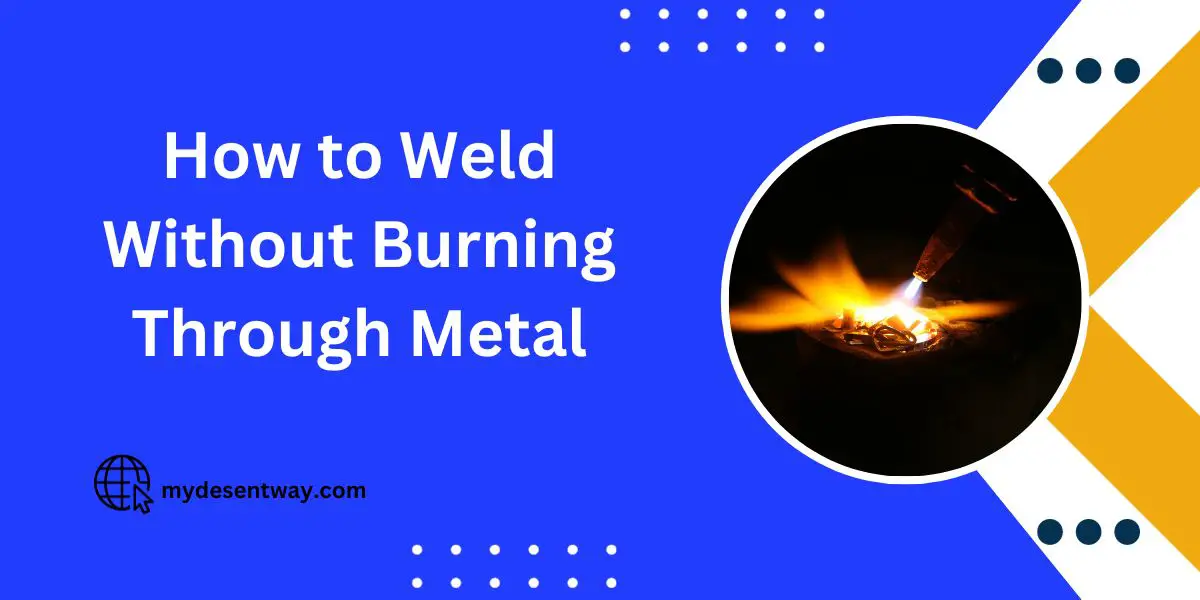
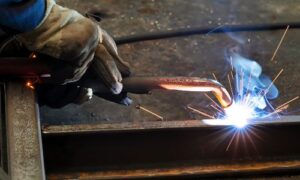
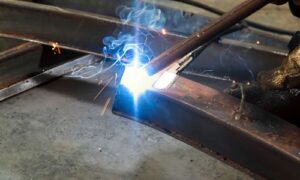
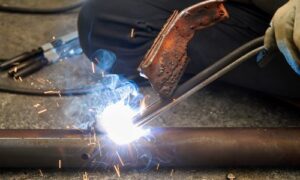
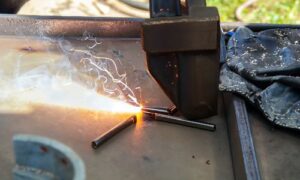
2 thoughts on “How to Weld Without Burning Through Metal: Mastering the Art”